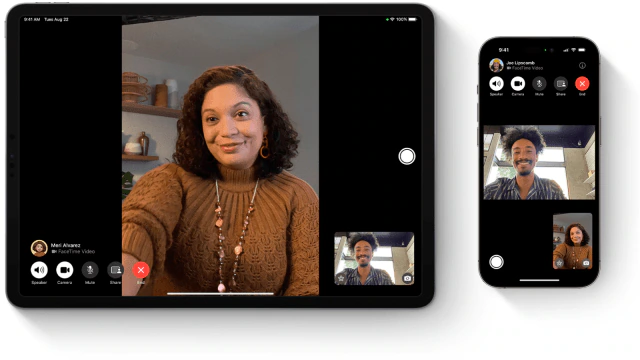Photo Credit: Indian Express
iOS 26 Introduces FaceTime Nudity Warning for Enhanced Safety
Apple’s upcoming operating system, iOS 26, is set to introduce a groundbreaking privacy and safety feature: the FaceTime nudity warning feature. This addition is part of Apple’s broader iOS 26 Community Safety tools, aimed at protecting users—especially minors—from exposure to inappropriate content during video calls.
The FaceTime nudity warning feature will automatically freeze both audio and video during a call if nudity is detected. The system then displays a message alerting users that potentially sensitive content is visible, prompting them to decide whether to resume or end the call. This real-time detection feature is powered by Apple’s on-device machine learning and does not involve any data being uploaded to external servers.
Originally Designed for Child Safety
Apple originally developed this tool for child accounts configured through Family Sharing, intending to protect minors from unsolicited exposure during video chats. The company has been progressively rolling out protective features such as nudity blurring in Messages and Shared Albums in recent years. The addition of the FaceTime freezes video nudity tool extends these protections into real-time communication.
However, early testers of the iOS 26 developer beta have observed that the nudity warning is currently active on all accounts, including adult profiles. Surprisingly, turning off the “Sensitive Content Warning” toggle in the settings does not disable this feature—an issue that may be corrected before the public release.
On-Device Nudity Detection Ensures Privacy
One of the core components of this feature is on-device nudity detection, which ensures that the content of FaceTime calls remains private. Apple has repeatedly emphasized that none of the video or audio is transmitted to its servers. Instead, the analysis occurs locally on the iPhone, preserving end-to-end privacy.
This approach aligns with Apple’s privacy-first philosophy, offering users the benefits of proactive safety tools without compromising their confidentiality. Even when the video and audio are paused, the process remains entirely device-based.
Mixed Reactions from the Community
Reactions to the iOS 26 FaceTime nudity warning feature have been divided. Many applaud Apple’s continued efforts to create a safer digital environment, particularly for children and teenagers. Others, however, are raising concerns over the feature’s application to adult users.
Some users have expressed frustration, suggesting that the inability to disable the feature infringes on personal freedoms, especially in private FaceTime calls between consenting adults. There’s also speculation that this may simply be a beta-stage error rather than an intentional universal rollout.
What’s Coming Next
- Public Launch: Apple is expected to officially release iOS 26 in September 2025. The final version may include refined controls to let users opt out of the feature.
- Toggling Options: It remains unclear whether users will be able to fully customize or disable the nudity detection settings for personal FaceTime calls.
- Future Applications: The introduction of on-device video content analysis could pave the way for more real-time safety and moderation features across Apple’s ecosystem.
Tips for iOS Users
- Understand the feature: It’s designed for protection, not surveillance.
- Update settings: Explore the FaceTime and Screen Time menus once iOS 26 is released for control options.
- Expect changes: The final build may differ from the developer beta, especially based on feedback.
- Submit feedback: Beta users are encouraged to report bugs or suggestions through Apple’s official feedback channels.
Final Thoughts
Apple’s FaceTime nudity warning feature represents a significant step toward real-time content moderation in personal communications. While it offers strong protections, especially for minors, its broader application and the lack of opt-out options may spark ongoing debate. With the public release of iOS 26 on the horizon, users can expect more clarity—and potentially more control—over how and when this feature is applied.
Follow us for latest updates:




